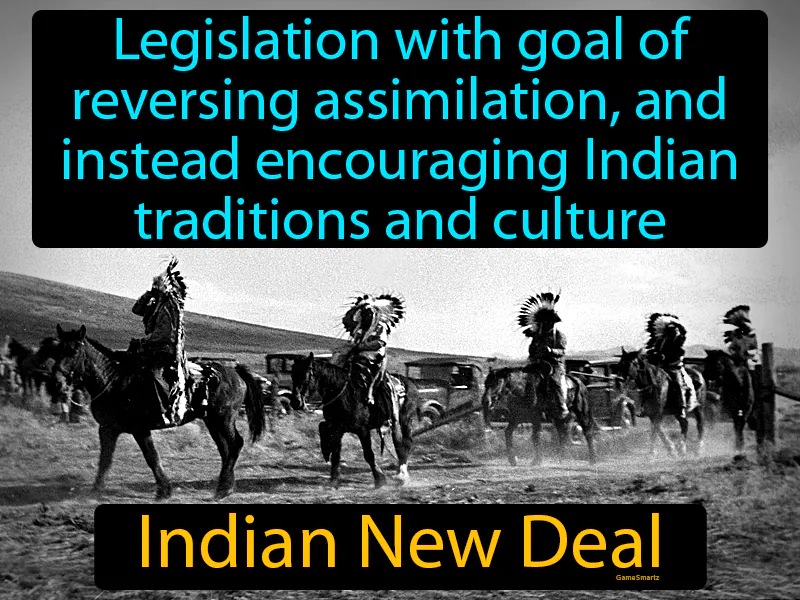Indian New Deal
Indian New Deal: Easy to understand
The Indian New Deal, part of the larger New Deal era from 1933-1940, was important because it changed U.S. policy towards Native Americans by promoting their cultural heritage and self-governance. It highlighted ongoing tensions between assimilation and cultural preservation, themes that are still relevant today as many groups strive to maintain their cultural identities. This shift allowed Native American tribes to manage their own affairs and control their lands, helping to preserve their traditions and languages. For average people today, this reminds us of the importance of respecting diverse cultures and the benefits of allowing communities to have a say in decisions that affect them. Every day, we see this in how schools and workplaces celebrate cultural diversity and encourage inclusive practices.

Practice Version

Indian New Deal: Legislation with goal of reversing assimilation, and instead encouraging Indian traditions and culture. Indian New Deal. It was a series of policies in the 1930s aimed at empowering Native American tribes and preserving their cultural heritage.